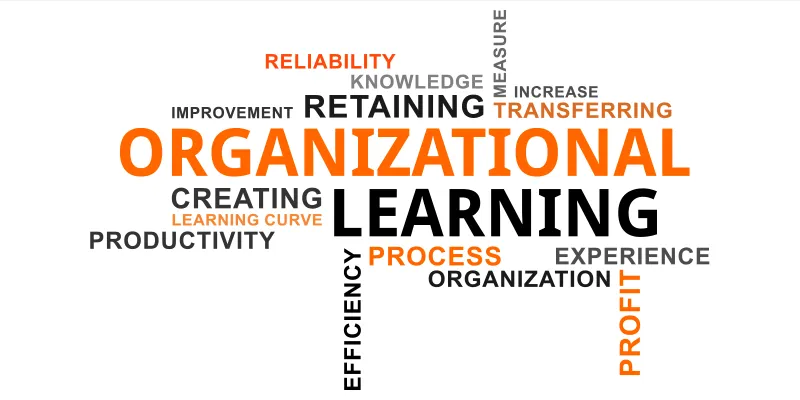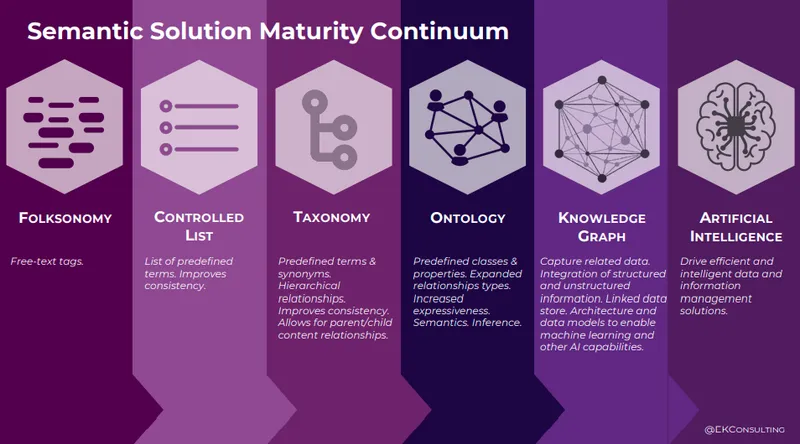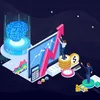The Digital Edge: Tech roadmaps and impacts on knowledge management
Six speakers at the Bangalore K-Community meetup share case studies, frameworks, and recommendations on digital transformation in the knowledge era.
The Bangalore K-Community is a group of professionals in knowledge management (KM) who meet in person or virtually to discuss trends and developments in the field. The recent meetup was hosted by Dr Molly Chaudhuri, Director at Manel Srinivas Nayak Institute of Management. As moderator, here are my takeaways from the wide-ranging and informative discussions.
As a media partner for the annual CII Global Knowledge Summit, see also YourStory’s coverage of the editions from 2022, 2021, 2020 and 2019, and session takeaways from the earlier Bangalore K-Community meetups on Metrics, Case Studies (HGS, Unisys) and Work From Home.
See our profiles of the Most Innovative Knowledge Enterprise (MIKE) award winners: Dubai Municipality, EY, Tata Steel, Cognizant Technology Solutions, Afcons Infrastructure, Petroleum Development Oman, BINUS University (Indonesia), and Mobarakeh Steel Company (Iran).

Tools and capabilities
“Technology is an enabler and a major pillar for the success of any KM programme, as long it is focused on the users, not just the creators,” explained Ritu Grover, Director, Knowledge Management, Khaitan & Co.
She recalled starting her KM journey at a time when there were no KM portals or intranets; e-mails and face-to-face interactions were the most common medium of communication or collaboration. “With the advent of better technology, we see that KM journeys have become shorter and smarter for organisations,” she observed.
“Once we cross that stage and enter the world of centralised repositories, the new challenge becomes managing the data that has been accumulated over the years in different platforms,” Ritu explained.
Proper categorisation of content at the time of knowledge capture and removing obsolete content is essential. “It doesn’t help if we have to spend hours looking for the information that might turn out to be outdated, or in some cases having to search through multiple platforms to get the right information,” she cautioned.
Technological tools can help here in cutting through the clutter and picking up fewer but more relevant search results. “Well-integrated content management systems can save a lot of productive time of business users. Enterprise search engines could provide a seamless search experience,” Ritu added.
Solutions like AI -based tools or bots can assist here in creating or finding the right content. “The audit trail could capture the usage of the platform. With that, certain process changes and improvements like auto-archival of dated content and timely review of metadata enhance the user experience,” she affirmed.
Every tool or technology presents unique features and capabilities that can be leveraged to enhance knowledge creation or sharing. “But just because everyone else is using it should not be a reason to invest in a new system. Identifying and selecting the right tools for your business is the key,” Ritu advised knowledge managers.

KM at TCS
Shanthi Natarajan, Head for Transformation, Delivery Excellence, TCS, shared the holistic story of the company’s techno-functional evolution of KM.
She described the phases as invidualisation, institutionalisation, socialisation, digitisation, and digitalisation. This journey to make KM systems cognitive and smart, or intelligent and intuitive for end users, happened in parallel in an agile incremental way.
“Each of these paths matured along with each other in different capacities, complementing one other,” she said.
Shanthi showed how the company moved from “knowledge a desk away” to “knowledge a click away” – centralised silo systems gave way to decentralised connected systems. “Enterprise search helped provide a unified knowledge view to end users,” she added.
She enumerated the key pillars of the KM focus: strategy and content; people and culture, process and governance; technology and platform. This helped more tacit knowledge become tangible knowledge, and the culture shifted from knowledge seeking to knowledge sharing.
The inter-generational workforce calls for KM strategy to consider generational diversity, with flexibility and customisation. Open communication and collaboration styles should be accommodated, while also avoiding stereotypes.

KM will be accelerated by the greater use of technologies like cloud, cognitive search, NLP, AI, and ML. “Relevant technology should be adopted to fit the purpose of KM: transformative enabler to maximise value,” Shanthi emphasised.
“KM focus for any organisation must lead to leveraging the organisational knowledge for business benefits for both customer and organisation,” she added, expanding the range of KM stakeholders. It should help in day-to-day work, and solve challenges that come in the way of success.
Over the years, TCS has built a vast ecosystem of expertise across industries and geographies. “Cost optimisation as well as growth and transformation are twin engines of TCS,” Shanthi explained. Harnessing the power of collective knowledge helps drive efficiency and innovation across the organisation.
KM involves not just intellectual capital but emotional and financial capital as well. “Knowledge is beyond just an artefact or online asset, rather it is a value differentiator. Knowledge, when married with technology excellence, can drive tremendous outcomes, given the digital edge in the transformation era,” she affirmed.
Currently, there is a lot of momentum behind AI, with other trends like augmented intelligence and metaverse still in the exploratory space. Business benefits of technologies should be assessed along with risks and security-privacy compliances. “Realistic expectations should be set for advanced technology adoptions,” Shanthi advised.
The way forward is in knowledge-driven transformation that is co-creative, digital, innovative and open. She broke down the word knowledge as know + l + edge. In other words, organisational know-how leveraging technology advancements should always give the edge in business.
“This is my personal belief that keeps me energised to harness the power of techno-functional KM,” Shanthi summed up.

Automation and governance
Mamatha Srirama, Delivery Head, Acies Innovations, recalled highlights from her KM journey which started in 2006. She earlier observed that many organisations lacked knowledge-sharing behaviours, which led her to study KM as a subject at TA Pai Management Institute (TAPMI).
When she joined Wipro, the focus was on institutionalising KM, and using tools like Sharepoint. One of the managers suggested to her that KM should be easily enabled, and not be a burden on employees.
There should be tech strategies for explicit knowledge and tacit knowledge, Mamatha advised. A range of technologies come into play here, such as analytics, AI, ML and Industry 4.0/5.0.
She now heads the delivery for KM projects, and observes that data is still scattered across devices, drives and document management systems. “It is still a challenge to get things together,” she said. She advocated effective approaches such as recommendation or insight engines, and not just faceted and federated search.
“Technology should help delivery in sentiment analysis so that we know whether we have satisfied customers during the projects. NLP and text analytics can be deployed to sift through emails and transcriptions,” Mamatha advised. Automated taxonomy and ontology can be created by technology based on inputs.
A balance should be struck between efficiency and productivity. “Timely and high-quality inputs via push strategy can be a gamechanger here,” she observed.
“Technology should automatically discover trends in organisational social media and push information about current trends that could lead to innovation,” she added.
“We need to take data governance more seriously and align it with data protection laws as they are becoming critical. In the end, whatever be the technologies, KM must help customer satisfaction,” Mamatha summed up.

KM culture and impact
“Fit-for-purpose KM strategies and long-term actions are necessary to create a sustainable enterprise KM framework,” advised Kalpanika Pradhan, tracing her journey to shift KM from a support model to a consulting model.
Steps in the journey included ground-level challenges like structuring and standardising content, effective communication, and building competency. KM maturity models and dynamic reporting dashboards were also implemented.
“The second phase of the journey was to build ‘KM as a brand’ in the organisation. KM was catering to the whole organisation. Real-time metrics and measurements helped in getting leadership sponsorship,” Kalpanika explained.
The final phase of the journey was to build a “sustainable KM culture” in the organisation. “With the help of robust processes and technology, digital KM – work from anywhere anytime – was introduced,” she added.
This included elements such as KM on mobile, unified knowledge academy, Power Apps dashboards, gamification, and chatbots. “These were enablers for a faster and effective KM adoption by internal and external customers,” Kalpanika described.
“As a result, multiple business benefits were witnessed like enhanced collaboration, improved communication, improved employee skills, increased innovation, and better decision making,” she summed up.

Source: Hariprasad Reddy
Digital intelligence
“Positive disruption is happening in the industry with digital technologies. The role of traditional KM is diminishing and standard document-based or template-driven KM will not have any place in the organisations,” observed Hariprasad Reddy, VP and Chief Quality Officer, Wipro.
Knowledge capture and transfer should happen on the fly. “The current digital revolution facilitates this change. Knowledge management is changing into ‘Digital Intelligence’. The role of knowledge managers is transforming into adding intelligence to the workforce with the help of digital technologies,” he explained.

Source: Hariprasad Reddy
“In large organisations, whether KM practitioners agree or not, knowledge islands exist and the role of the KM function is ensuring seamless knowledge flow between these islands or bringing out the intelligence from these islands to enterprise-wide usage,” Hariprasad said.
“Connected enterprise is key for improved business performance, and the role of KM is critical in ensuring this,” he added.
He described a number of ways in which the connected enterprise can happen, such as cognitive search and just-in-time knowledge. It involves predicting the knowledge needs of individuals, project teams, or even customers. Push-based knowledge flows are based on characteristics and needs.

KM engagement and effectiveness (source: Hariprasad Reddy)
“The competitive spirit of the cross-generational workforce can be tapped through gamification. AR/VR-based knowledge capsules, or metaverse, can drive engaged knowledge flow,” Hariprasad added.
KM should have impact on business objectives like customer satisfaction levels, improvement of margins, getting additional business, and employee satisfaction levels. “For customer satisfaction improvement, the focus is more on ensuring that the customer experiences the organisation’s collective knowledge instead of just the knowledge levels of customer-facing teams,” he emphasised.
“For margin improvements, the focus is on outcomes like improving the productivity levels of the workforce, reducing the time taken by a newbie to become productive, and creating a reusable knowledge base,” Hariprasad summed up.

Source: Zach Wahl
Making KM ‘clickable’
Keynote speaker Zach Wahl, CEO, Enterprise Knowledge and co-author of Making KM Clickable, shared insights on the rapidly changing state of KM, based on his experience of over two decades in the field.
KM technology solutions should be use-case driven, implemented in an agile manner, and be based on semantic web standards (eg. SKOS, OWL, RDF) for interoperability.
He described six steps of the KM cycle: create, capture, manage, enhance, find, and connect. KM initiatives face challenges such as exponential increases in content and data, sudden remote work, and growth of less-structured communication like social media. This leads to increased time to find information and loss of productivity, Zach cautioned.

Source: Zach Wahl
KM should not be just about finding knowledge but making it understandable and actionable. “The key is to connect KM outcomes to business outcomes,” he emphasised. KM should be connected to improved delivery, better sales, improved customer satisfaction, and future readiness.
Steps in the KM roadmap could include content cleanup, findability redesign, expert finder, and semantic search tools to improve learning and productivity.
Zach described seven layers of KM portal architecture: repository, findability, collaboration, metadata, analytics, content creation, and governance.

Source: Zach Wahl
“The last 10 years have been very interesting for KM. KM is becoming synonymous with digital transformation, and KM is the foundation of AI. As data velocity continues to increase, KM will play a greater role in providing context,” Zach summed up.
The two-hour session ended with provocative discussions on topics such as KM and the intergenerational workforce, academic and practitioner viewpoints on KM, and evolving human-tech synergies.
Future sessions of the Bangalore K-Community will feature more case studies of KM, organisational learning, emerging technologies, and inclusion in the knowledge society.
Edited by Teja Lele











